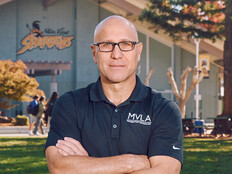Vaping Detectors Work to Shift the Reporting Burdens
Jamal Colson, principal of Bellport Middle School in New York’s South Country Central School District on Long Island, began addressing the vaping problem during the 2017-2018 school year. With close to 850 students in his building, Colson knew his staff couldn’t physically monitor every vape user.
“Students as young as the sixth grade were vaping,” he says. “We needed a way to rapidly respond to vaping reports, and we wanted an easy-to-deploy technology that staff could use without sending too many false alerts.”
So in 2019, the district purchased and installed Soter Technologies’ FlySense Vape Detectors, which the IT team had up and running in just half a day, Colson says.
When vaping is detected, the devices send alerts via text message and email to Bellport’s security personnel, directing them to where the vaping is taking place. This allows other school staff to focus on their primary jobs.
RELATED: Five tips for getting the most out of vaping detectors in schools.
“In just minutes, we can identify the students involved. We don’t need additional staff to manage this technology. It saves us time,” Colson says.
With the FlySense devices in place, teachers are no longer losing instructional time due to monitoring and referring students for vaping. “Having these vaping detectors allows our teachers to focus on instruction, with fewer distracted students,” he says.
Since installing the sensors, Colson estimates that vaping on campus has been reduced up to 70 percent, and he has discovered another positive result: “Students are happy that they are not put in the difficult position of alerting staff that fellow students or friends are vaping. For them, the devices and detection system take this burden off their shoulders, and vaping is addressed by staff and administrators, as it should be.”
The only downside, Colson says, is coverage. There are still areas away from the sensors where students can sneak away and vape. He recommends carefully considering the hot spots where vaping is most likely to occur when determining where to install sensors.
Click the banner below to learn how to improve your districts’ physical security.














